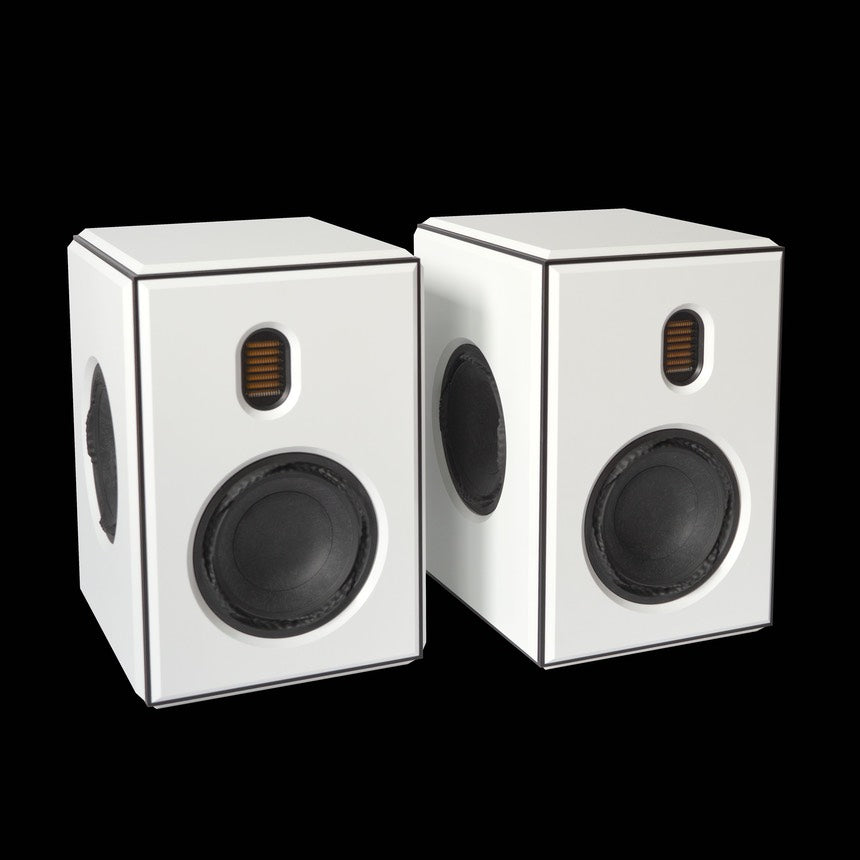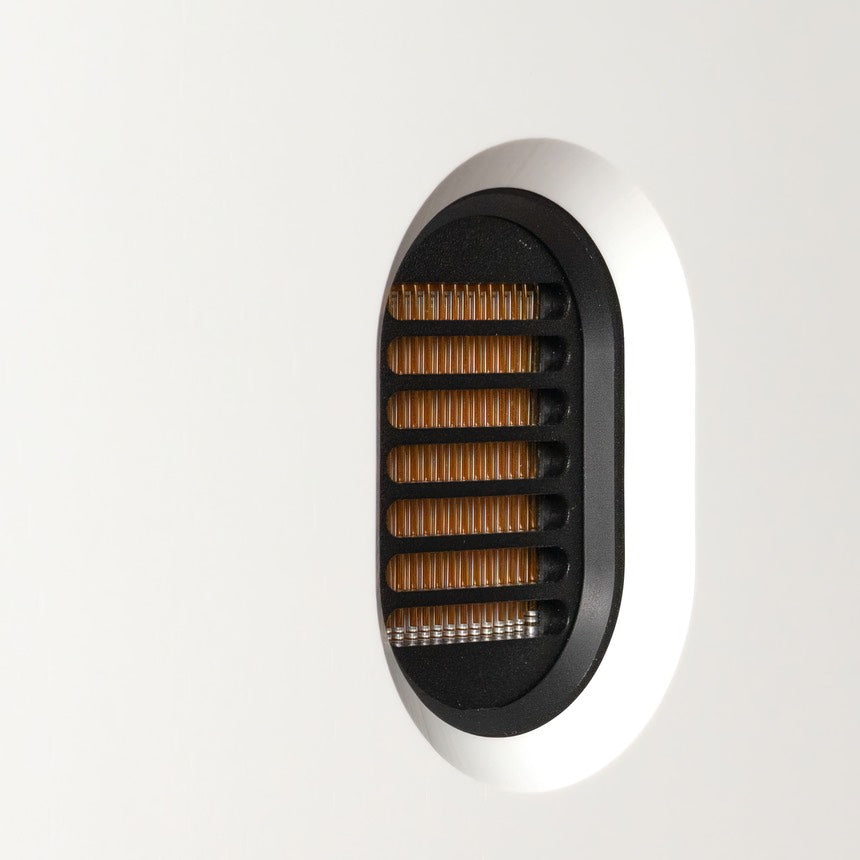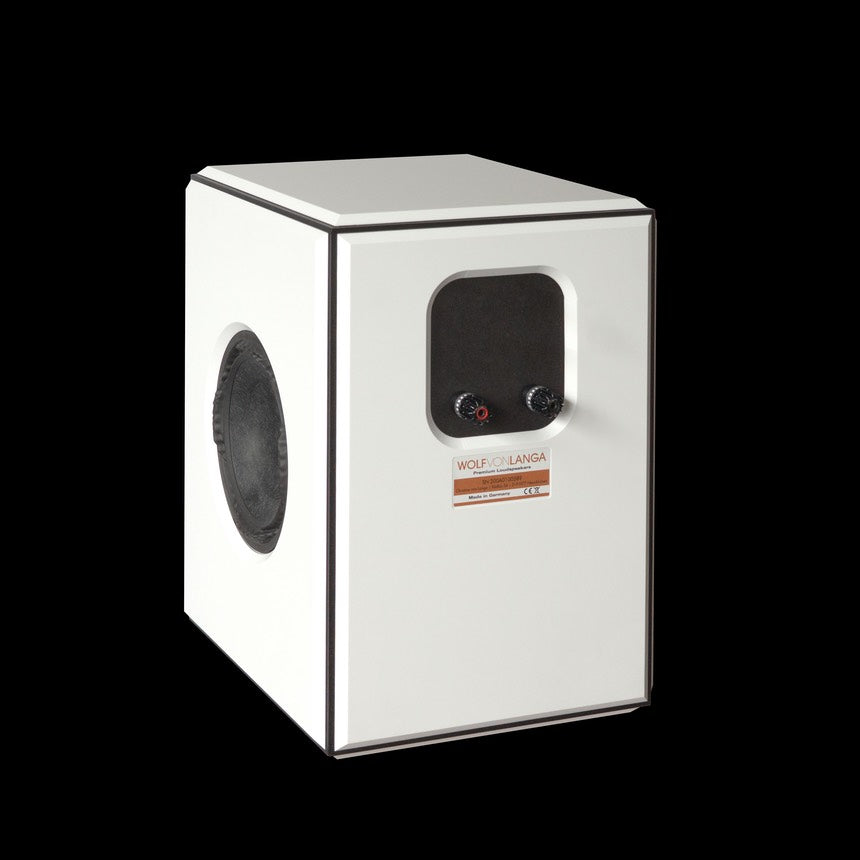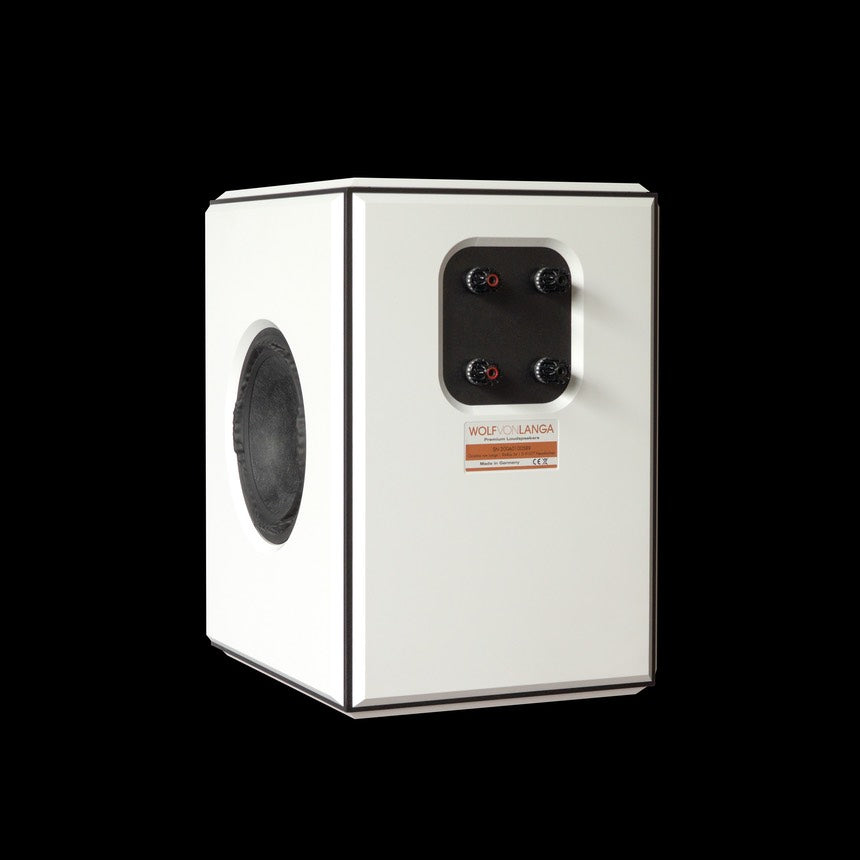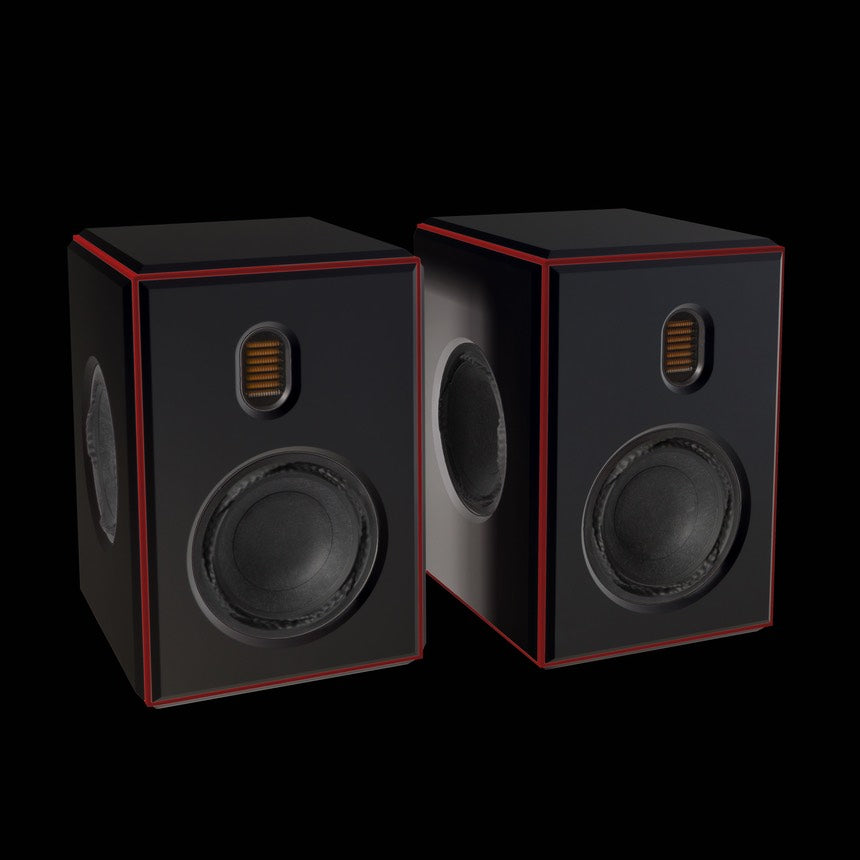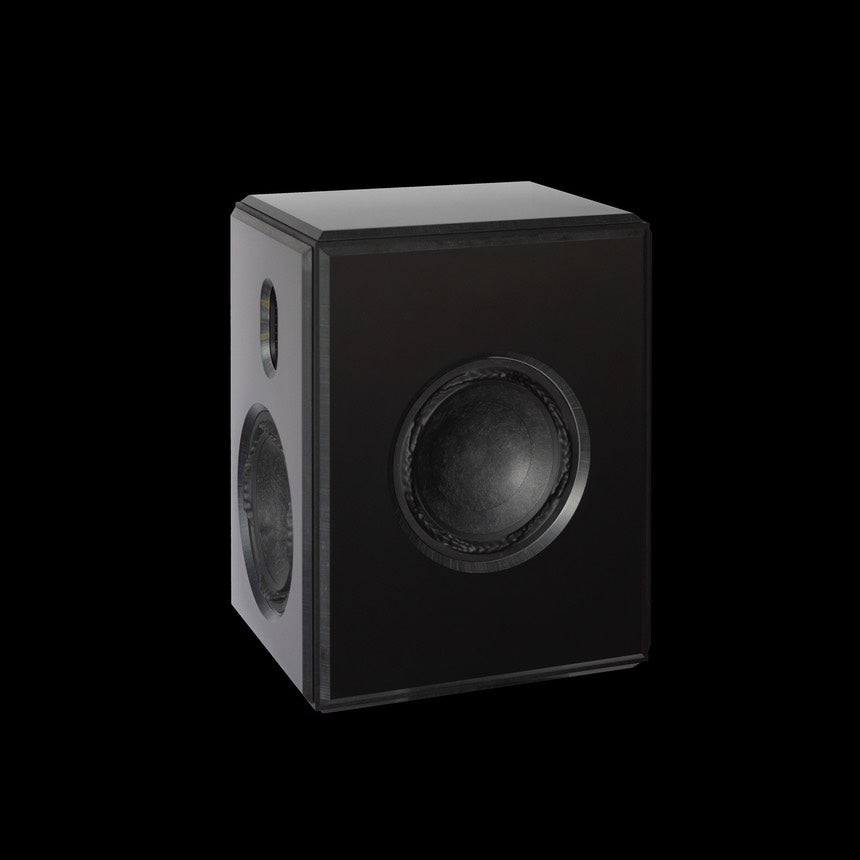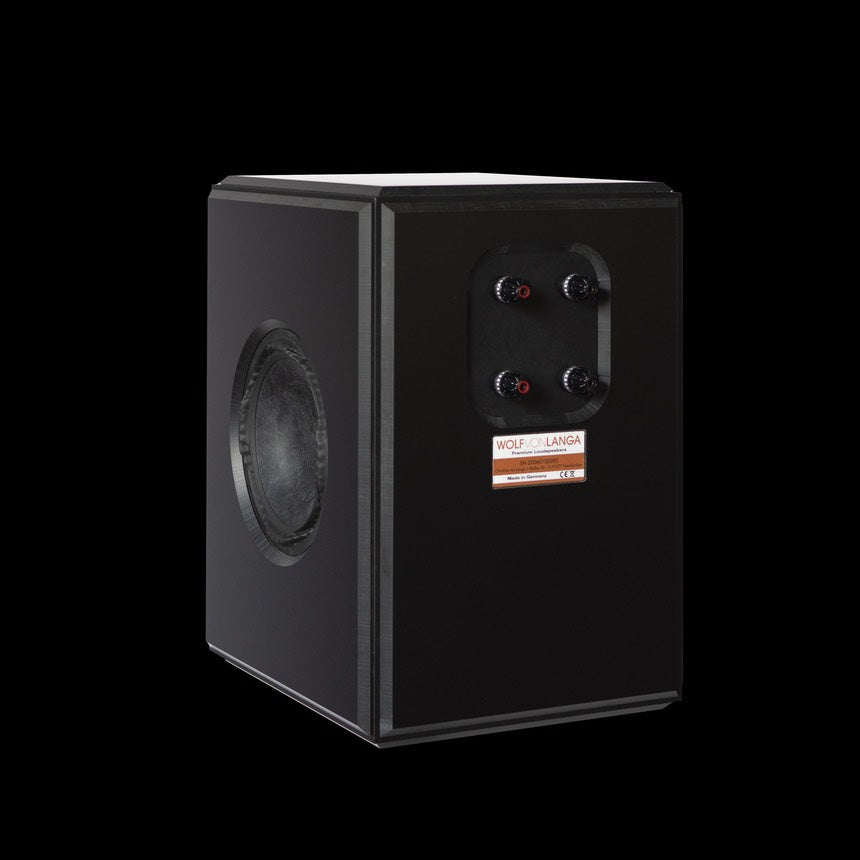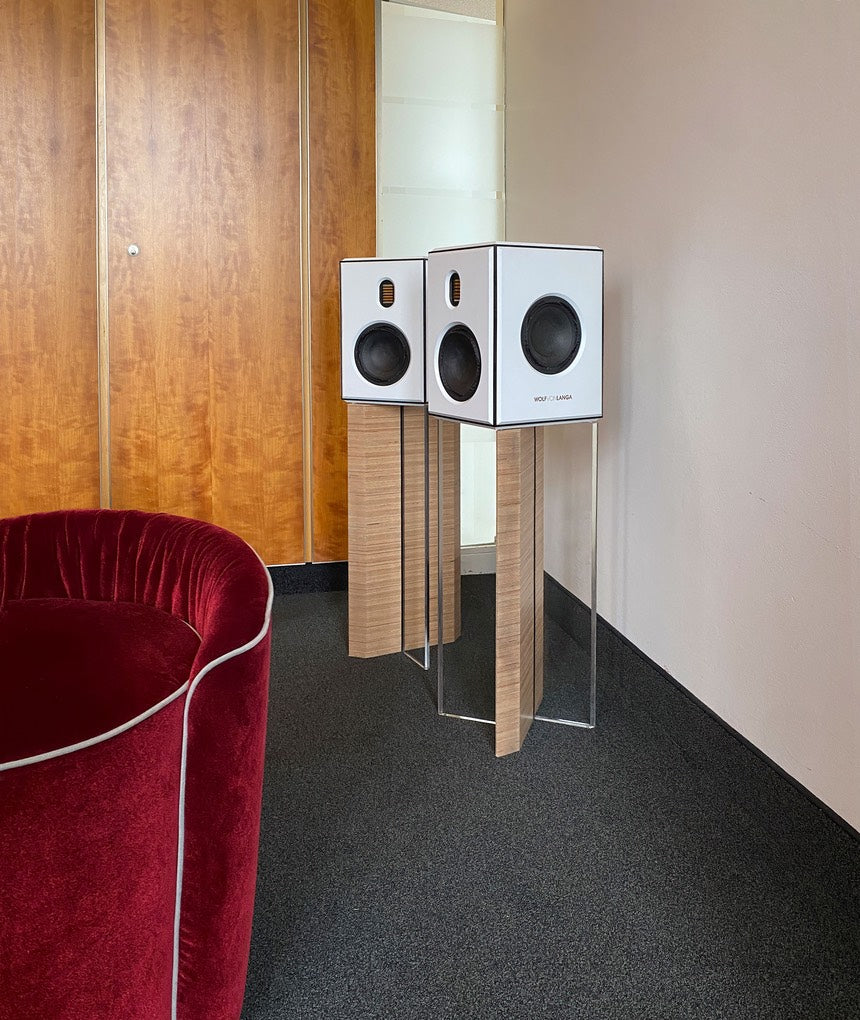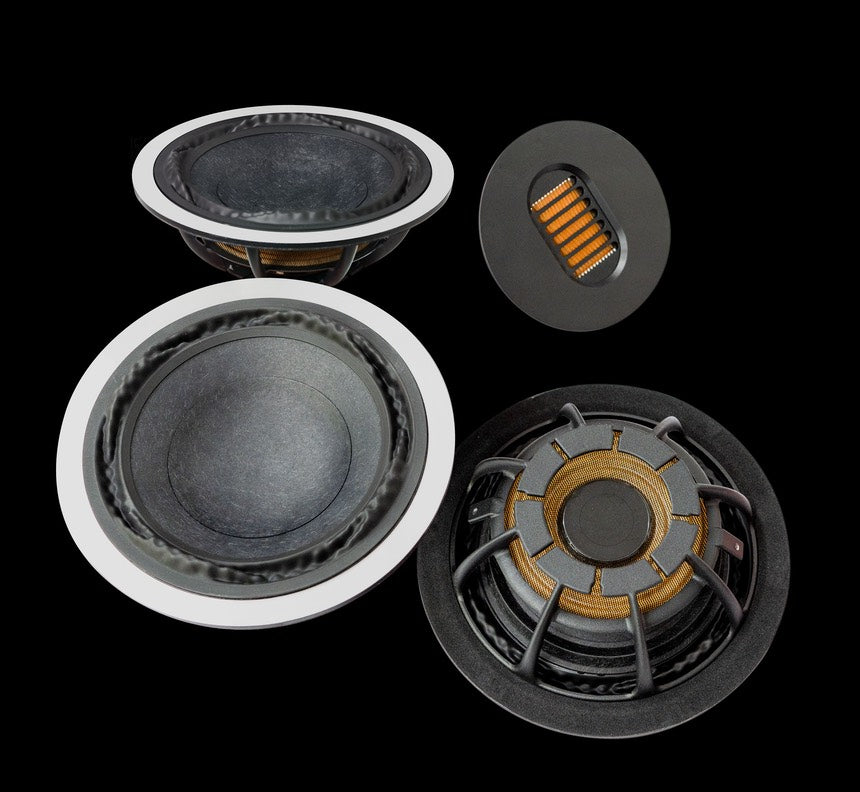Wolf Von Langa Serendipity
WOLF VON LANGA has been observing developments in the loudspeaker market for decades. Therefore, in addition to the existing floorstanding loudspeakers from his own production, he would like to offer you a small, handy format - a desideratum that will meet your personal wishes, the fulfillment of which you might have considered impossible until now... The WVL success model SON is already considered small by many people, but this loudspeaker certainly loves space around it, in other words: it needs a little space to be able to show its qualities to the full.
WVL's search for a way not to sacrifice superior quality even in a smaller living space or studio was crowned with success on an unusual path of discovery:
A midrange loudspeaker that WOLF VON LANGA had envisaged in response to many requests to offer yet another larger model, proved to be a new and surprising discovery. This discovery, which went beyond happy coincidence, allowed the intelligent conclusion that a mid-bass loudspeaker could also be made from it. From this resourcefulness and other tidbits, a loudspeaker was born:
WVL SERENDIPITY
The record-sized SERENDIPITY is not only convincing tonally, dynamically and in terms of design, but also impresses with naturalness in the truest sense of the word. The measurement results are so outstanding that WOLF VON LANGA also recommends this loudspeaker as a listening monitor for sound engineers. The size makes ideal placement in the listening room a breeze; in the studio, the speaker is simply placed on the console.
The Technology
WVL SERENDIPITY is a 2-way compact speaker that belongs on stands or on the recording studio console. On a stand SERENDIPITY comes to a height of just under 1m. Any listening position can thus be ideally illuminated with music in a living room: Sofa, armchair, chair or even any place while standing or working - due to its dimensions, any place in the living room is a good listening place.
The technical ingredients of this speaker are absolute treats. Nothing off the shelf, not even remotely comparable to mass-produced products!
The woofer measures 130mm in diameter. The tweeter has a sound outlet of only 28x43mm. Due to the chosen enclosure size, sound beaming is almost eliminated. The low-frequency foundation is reproduced by 2 opposing membranes, which mechanically relieve the active system in the lower frequency range and provide an absolutely clear and clean midrange.
An Air Motion Transformer with excellent impulse response and an unusual lack of distortion is used as the tweeter. The relatively high weight of the diaphragm and its structurally induced stiffness, together with the extra strong magnet systems, result in remarkably powerful music reproduction, right down to the resonant frequency.
The crossover is designed externally to keep any vibration away from the sensitive components. Sound distorting effects are thus excluded from the outset. The sandwich construction housing, made of fiber composite and solid surface material, ensures exceptional dimensional stability and freedom from vibration.
Maximum freedom for every conceivable operating mode is ultimately made possible by the design of the external crossover and all connection terminals.
The crossover can also be completely replaced by the active mode. Through additional software or an audio processor you configure the SERENDIPITY absolutely time and phase correct.
All crossovers and speaker connections are equipped with a filigree signal conductor made of pure copper. The ground optimization of the signal conductors minimizes ground storage effects and eddy currents. The sound image appears clearer, with noticeably more substance and spatiality.
The Box
Uncompromising in design. The sandwich construction of the housings made of partially carbonized fiber composite and acrylic-bonded solid surface material results in exceptional rigidity. The various layers are joined together to inhibit vibration, absorbing cabinet energy and compensating for stress.
The low-frequency foundation is reproduced by two oppositely positioned diaphragms, which mechanically relieve the active system in the lower frequency range, and provide an absolutely clear and clean midrange. The opposite positioning of the woofer units with a large movement stroke leads to a force balancing of the unwanted cabinet vibration.
Clear lines and a design language that does not cause irritation in the living environment characterize the SERENDIPITY. No slanted edges that disturb, no crookedness that annoys. As with the STAGE, SON and AUDIO FRAME loudspeakers, straight lines dominate the design. A concept that runs like a red thread through the WOLF VON LANGA speaker collection.
Radiation Pattern
The selected housing size enables an almost perfect omnidirectional sound distribution. Large beveled edges, which cause irritation in the living world, are designed in the WVL SERENDIPITY by small interrupted chamfers. The almost point-shaped radiation of the high frequencies makes a skewing of the entire speaker unnecessary. Clear lines and uniform radiation behavior are convincing: The WOLF VON LANGA loudspeaker concept!
Drivers
The technical ingredients of this speaker are absolute delicacies. Nothing off the shelf, not even remotely comparable with mass products from other manufacturers!
The shaping and construction details of the diaphragm alone, which is used three times per speaker, is more reminiscent of a work of art than a surface that serves to generate sound. Cast from a fiber mixture, air-dried as well as stabilized with a folded circumferential ring at the decisive point (the decisive membrane edge), a structure of excellent mechanical strength is created, which reproduces sound spectra exactly.
In addition, this construct is stiffened by a spherical dome in the apex (diaphragm opening at the power-giving voice coil). This is where the carrier of a voice coil comes in, which is not simply made of several layers of copper-plated aluminum wire, but leads to significantly lower frequency and phase modulation distortions due to the nested winding technique and the drive tuned to it.
The diaphragm structure together with the voice coil is guided by a tube of vulcanized rubber arranged in waves according to specific rules. Simulations and tests have shown that this design results in maximum freedom from distortion of the diaphragm confinement, which normally accounts for the lion's share of non-linear loudspeaker distortions.
Magnet Construction
The drive. The only magnetic "12-cylinder" we know. Developed according to the latest findings in modern loudspeaker manufacturing. Using nanometer-precise white light interferometers for absolute measurement of displacement, distance and timing, the modulation of the force factor is reduced to the absolute minimum. After ideal shaping of the ferromagnetic components of the magnet system for the overhanging voice coil, electrically damping rings and another magnet are also used at the appropriate location. Both contribute to the linearity of the overall system. The result is the lowest magnetic hysteresis distortion of permanent magnet systems on the market. Nothing off the shelf.
To ensure that the electromechanical counterpart also matches the qualities of the magnet system, the voice coil is wound in an interleaved manner on a damping-free carrier and positioned so that only the slightest non-linear distortion occurs during dynamic excitation. In fact, with conventional magnet systems and voice coils, measurements show that the force acting on the entire moving group of a loudspeaker varies greatly with different excursions. Ultimately, in conventional loudspeakers, the diaphragm is then driven by forces of varying strength. This leads to imprecision in music reproduction that must be overcome.
The nested winding technology and the drive tuned to it result here in clearly audible lower frequency and phase modulation distortions.
Distortion Values
The drive. The only magnetic "12-cylinder" we know. Developed according to the latest findings in modern loudspeaker manufacturing. Using nanometer-precise white light interferometers for absolute measurement of displacement, distance and timing, the modulation of the force factor is reduced to the absolute minimum. After ideal shaping of the ferromagnetic components of the magnet system for the overhanging voice coil, electrically damping rings and another magnet are also used at the appropriate location. Both contribute to the linearity of the overall system. The result is the lowest magnetic hysteresis distortion of permanent magnet systems on the market. Nothing off the shelf.
To ensure that the electromechanical counterpart also matches the qualities of the magnet system, the voice coil is wound in an interleaved manner on a damping-free carrier and positioned so that only the slightest non-linear distortion occurs during dynamic excitation. In fact, with conventional magnet systems and voice coils, measurements show that the force acting on the entire moving group of a loudspeaker varies greatly with different excursions. Ultimately, in conventional loudspeakers, the diaphragm is then driven by forces of varying strength. This leads to imprecision in music reproduction that must be overcome.
The nested winding technology and the drive tuned to it result here in clearly audible lower frequency and phase modulation distortions.
Sound Pressure Levels
Amazing efficiency from a speaker of this size!
Intuition plays tricks on us.
Let's take a simple example: How does a speaker cone move when we try to create an "impulse"? Wanna bet that some would guess that the diaphragm moves forward quickly and then returns to its rest position just as quickly? From this, we might conclude that a heavy diaphragm would perform quite poorly. Very reasonable, but unfortunately also very wrong.
After all, acoustics don't work that way. If it did, you could create a constant pressure by pushing a diaphragm forward and holding it there. What really happens is that the air just gets out of the way of the diaphragm, and the earth keeps spinning.
You couldn't even create a constant pressure by moving a membrane at a constant speed. It would create what we call wind, but as soon as the wind blows, the pressure settles back down. In short, a moving diaphragm can only create pressure by pushing on the air and accelerating it. The generation of a short pressure impulse is then nothing else than a short pressure shock (acceleration).
This just shows how fallible our intuition is.
The sound pressure does not correspond to the membrane position. Not even the membrane velocity. It corresponds to the acceleration. So now we can answer the question: What motion does a membrane make when asked to emit a sound pulse? It accelerates during the impulse and then oscillates out again. Now isn't the amplifier supposed to stop the motion of the diaphragm? Eventually it does, but not nearly as fast as the myth of the damping factor would have it.
Basically, all this means is that moving mass only affects sensitivity, while what people call "fast" or "slow" boils down to bandwidth. If a speaker's frequency response is smooth, and continues for a long period of time, it is "fast" and "low distortion".
Only the combination of driving force, moving mass and stiffness of the diaphragm construction allows statements about the characteristic sound pressure.
Crossover Network
Amazing efficiency from a speaker of this size!
Intuition plays tricks on us.
Let's take a simple example: How does a speaker cone move when we try to create an "impulse"? Wanna bet that some would guess that the diaphragm moves forward quickly and then returns to its rest position just as quickly? From this, we might conclude that a heavy diaphragm would perform quite poorly. Very reasonable, but unfortunately also very wrong.
After all, acoustics don't work that way. If it did, you could create a constant pressure by pushing a diaphragm forward and holding it there. What really happens is that the air just gets out of the way of the diaphragm, and the earth keeps spinning.
You couldn't even create a constant pressure by moving a membrane at a constant speed. It would create what we call wind, but as soon as the wind blows, the pressure settles back down. In short, a moving diaphragm can only create pressure by pushing on the air and accelerating it. The generation of a short pressure impulse is then nothing else than a short pressure shock (acceleration).
This just shows how fallible our intuition is.
The sound pressure does not correspond to the membrane position. Not even the membrane velocity. It corresponds to the acceleration. So now we can answer the question: What motion does a membrane make when asked to emit a sound pulse? It accelerates during the impulse and then oscillates out again. Now isn't the amplifier supposed to stop the motion of the diaphragm? Eventually it does, but not nearly as fast as the myth of the damping factor would have it.
Basically, all this means is that moving mass only affects sensitivity, while what people call "fast" or "slow" boils down to bandwidth. If a speaker's frequency response is smooth, and continues for a long period of time, it is "fast" and "low distortion".
Only the combination of driving force, moving mass and stiffness of the diaphragm construction allows statements about the characteristic sound pressure.
Audio Connectors
All crossovers and speaker connections are equipped with a filigree signal conductor made of pure copper. The mass optimization of the signal conductors minimizes mass storage effects and eddy currents. The sound image appears clearer, with noticeably more substance and three-dimensionality.
The routing of music signals through openings made of metal is avoided here. All electrical connectors are designed to be nearly massless to prevent energy storage effects.
Specifications
- Concept: passive two-way loudspeaker with vibration-inhibiting passive cones
- Dimensions & weight: 352 x 242 x 295 mm (H x W x D; without stand); 11.1 kg/each
- Finishes: Black/Davos White; Black/Vulcan Black; Black/Avana Gray; Black/Star Black; Red/Vulcan Black
- Frequency response: 48-22,150Hz ±2.5dB; 35-33,000Hz -10dB; Power handling max.: 150W
- Nominal impedance: 4 ohms
- Characteristic sound pressure: 88 dB at 2.83 V/1 m
- Other: External crossover, optional speaker stands, optional software
- Warranty: 5 years after registration with the manufacturer
- Dimensions optional stand: 638 x 241 x 299 mm (H x W x D); 7.5 kg/each
